Table of Contents
- Rack Construction Material
- Rack Load Capacity
- Rack Heel Clearance
- Rack Pannier Support Area
- Lowering Your Pannier’s Centre of Gravity
- Lightweight Racks
- Long Warranties
- Racks and Disc Brakes
- Racks On Fat Bikes
- Modifying Your Rack Position
- Your Frame Doesn’t Have Any Rack Eyelets?
- Tubus Cargo vs. Tubus Logo
- Recommended Racks
Racks are one of the more important parts on a touring bike because, well… rack failure sucks and can make touring pretty hard. I recommend investing once, getting it right, and you’ll never have to do it again – the best racks last a lifetime.
Alright, let’s look into the things to consider when buying a rear pannier rack for your touring bike.
Rack Construction Material
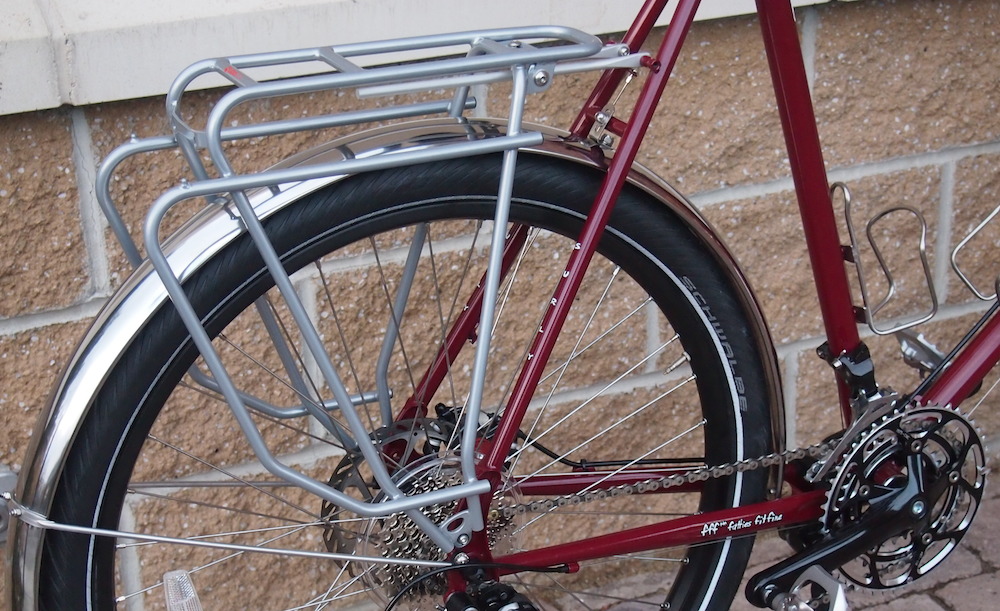
I almost always recommend racks that are built using steel. This is because many aluminium racks have the tendency to wear away at the rack tubing from the pannier hooks, leading to rack failure over time.
A high-end steel rack is often more expensive than aluminium equivalents, but it’s almost guaranteed that it will last a lifetime of touring. Surprisingly, nice steel racks are often around the same weight as aluminium offerings. The main downside to a steel rack is that it will show surface rust.
Rear racks are also available in titanium and stainless steel. The advantage of these materials are that they build a lighter product, and they’re free of surface rust. When comparing the Tubus Logo in different variants, the titanium version drops about 200g (7oz) compared to the steel. The only real downside is that it’s literally twice the price!
Rack Load Capacity
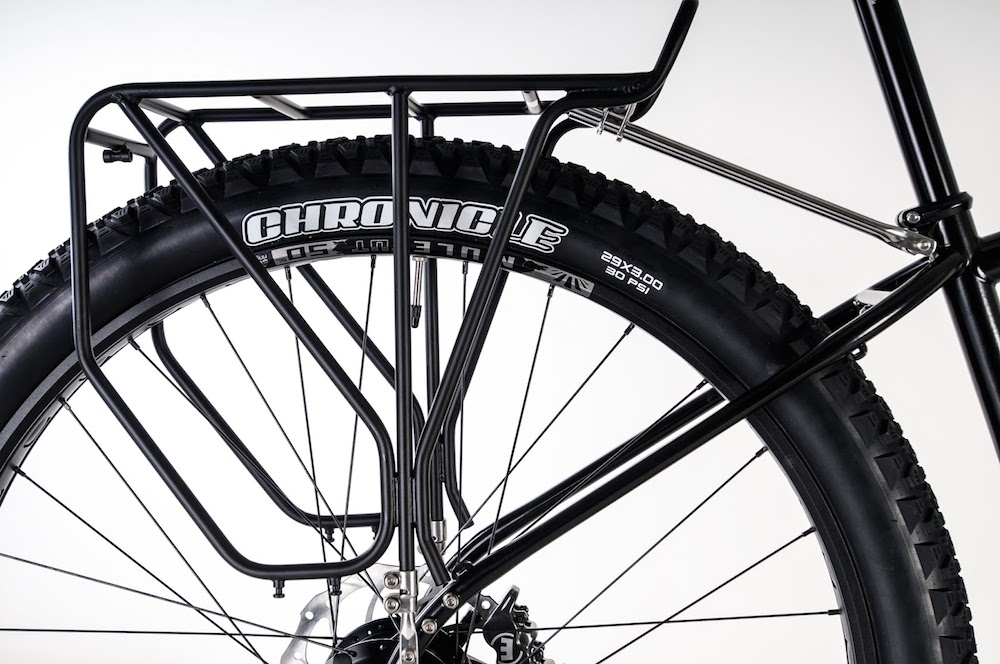
Different racks have different load capacities. The best touring racks generally offer a capacity between 35-50kg (80-110lbs). Many other cheaper racks on the market are limited to lighter loads between 10-20kg (22-44lbs). Although you may not exceed these capacities, higher capacity racks will likely be more reliable in the long-term.
Rack Heel Clearance

If the chainstays on your bicycle are on the shorter side (440mm or shorter), you may need a rack that helps with heel clearance. I’ve created a resource that lists 10 racks with designs that provide additional heel clearance HERE.
Rack Pannier Support Area
The pannier support area of a rear rack is very important. With more surface area for your pannier bag to rest on, your pannier will move less and reduce the overall stresses to your pannier hooks.
Lowering Your Pannier’s Centre of Gravity

As pannier bags are often heavily laden, they have a significant effect on the way a bike handles. To gain greater stability and manoeuvrability, find a rack which permits your bags to sit lower. Some manufacturers offer lower sidebars for pannier mounting, others offer their racks in multiple heights to suit different wheel diameters. A handful of racks are adjustable in height between 26″ and 29″.
Lightweight Racks
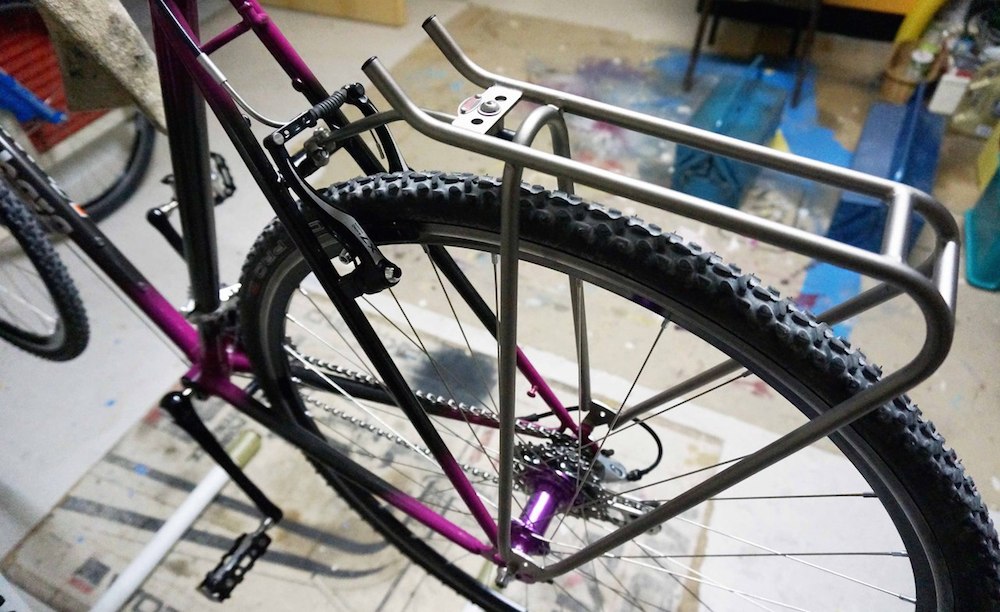
Racks come in styles to suit everything from very small and light loads, through to heavy-duty steel racks that can carry everything you need on your long haul ride.
The reason that Tubus racks are more expensive than most (other than exceptional quality and finish) – they have an exceptional strength to weight. Tubus racks use hollow steel tubes to keep the construction weight down. To illustrate this, consider that the difference in weight between a Surly Rear Rack and Tubus Logo is 600g (21oz). The Tubus is almost half the weight!
Long Warranties
Different rack companies offer different warranties for their products. Tubus offers the best warranty with their racks: 30 years. And within the first three years, they grant free worldwide delivery of spare parts if you need them.
Racks and Disc Brakes
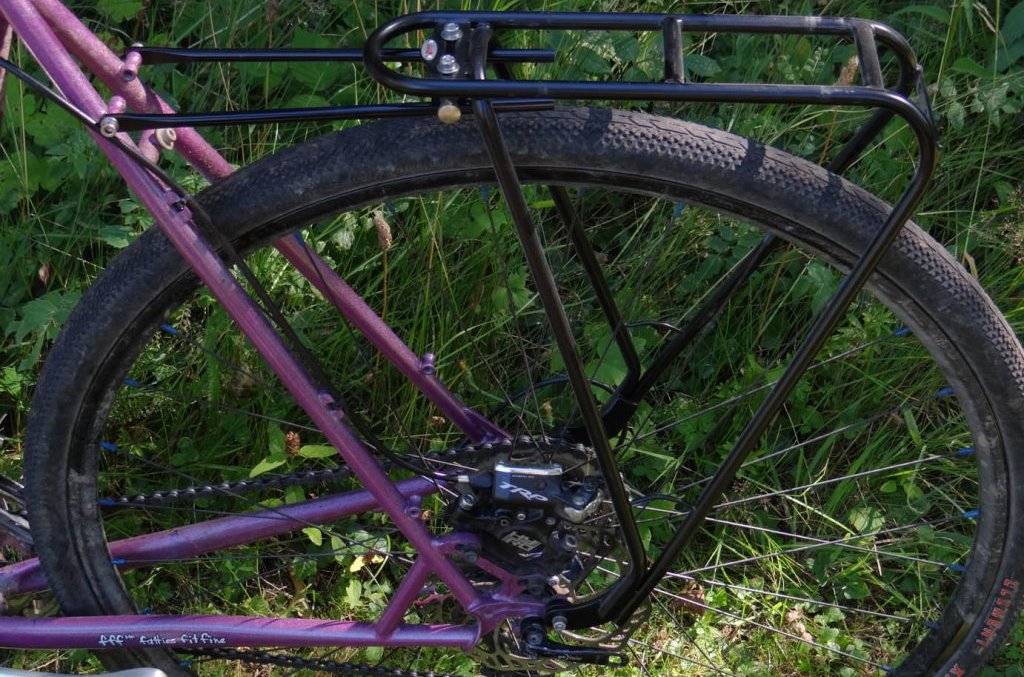
If your bike uses disc brakes on the top of the seat stay, make sure your rack is capable of clearing the disc brake caliper. I have fitted Tubus Cargo and Racktime Add-it racks to bikes with disc brakes with no issues as the included kit uses mounting spacers. If that fails though, a Tubus quick release mounting kit will allow you to use Tubus racks with disc brakes.
There is one Tubus rack designed for disc brake bikes without eyelets, however, its carrying capacity is rated to 20kg.
Racks On Fat Bikes
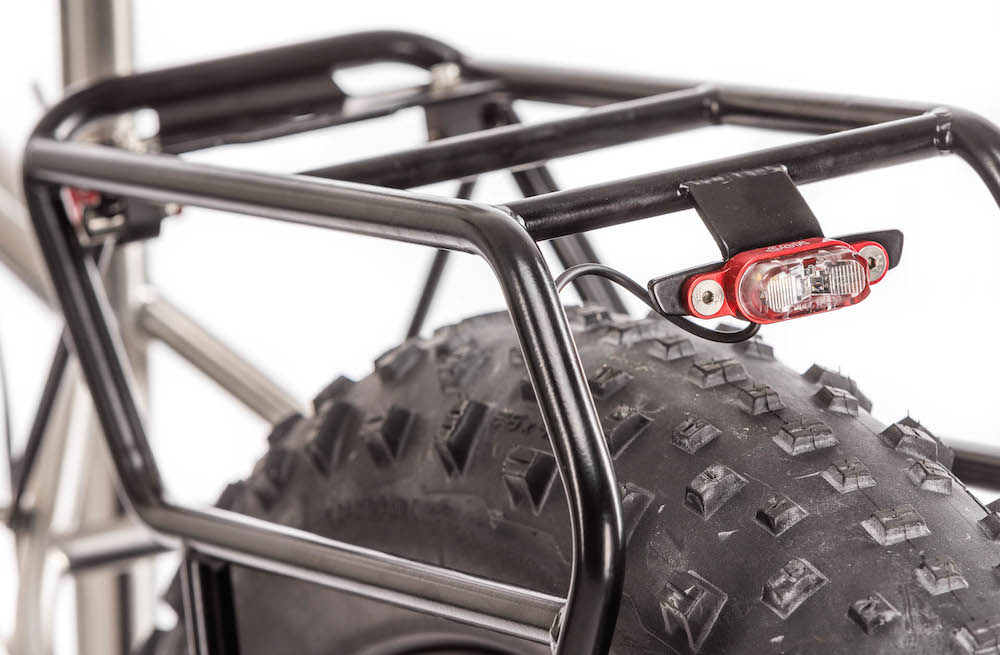
It’s possible to get a rack on a fat bike if it’s designed for the purpose. Check out the Old Man Mountain Sherpa, Axiom Fatliner, Blackburn Outpost Fat, Salsa Alternator 190 and Tubus FAT racks.
Modifying Your Rack Position
Sometimes racks just don’t fit and you have to get a bit creative. Tubus may have some aftermarket parts that may help…
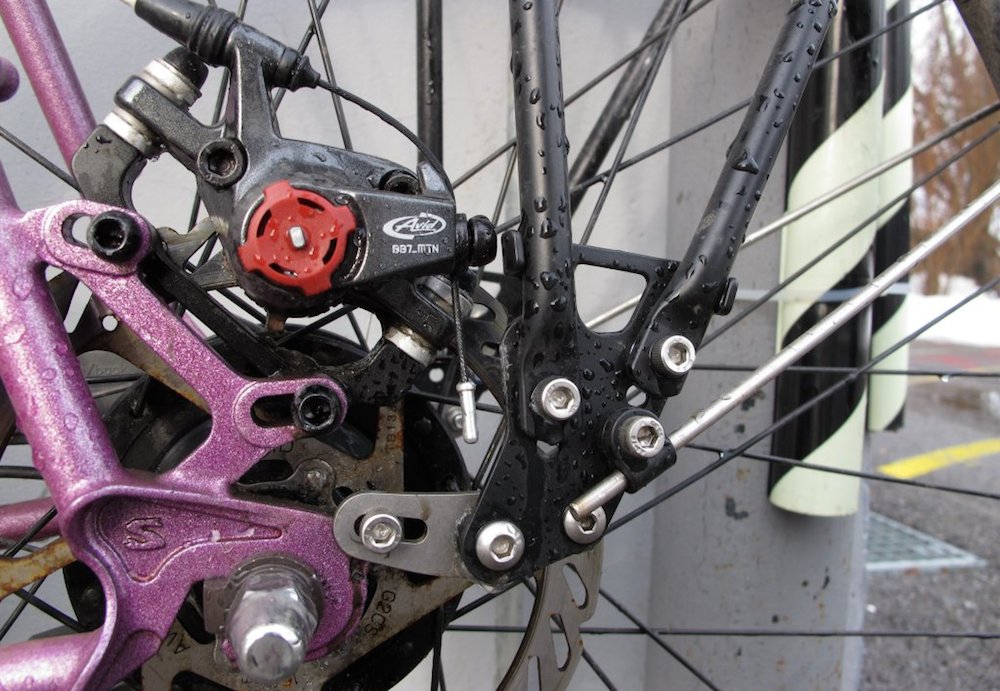
Lower Rack Mounting Kit
Designed to move the rack up and back, this kit will give you more heel clearance and will aid in clearing seatstay-mounted brake calipers.
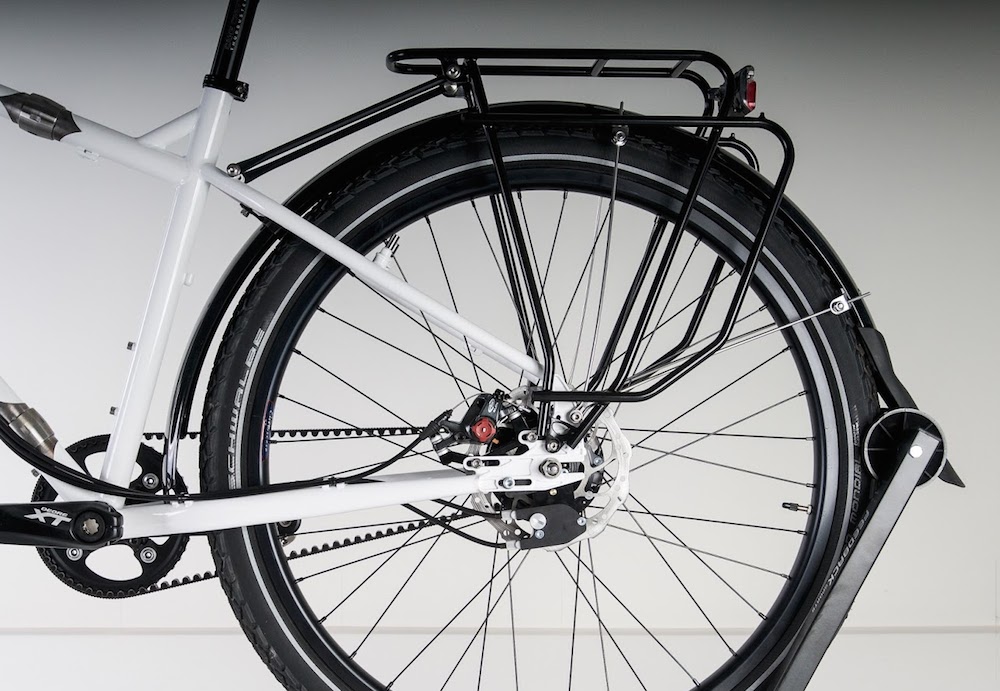
Long Upper Rack Mounting Stays
If you use a smaller frame, you may need to find longer stays from Tubus. They’re available in 190mm, 240mm and 350mm. Other brands like Surly have aftermarket upper stays that are 240mm length.
Your Frame Doesn’t Have Any Rack Eyelets?
If you are using a bicycle that has no provision for a traditional rack, Tubus make mounting kits to make their racks fit your frame.
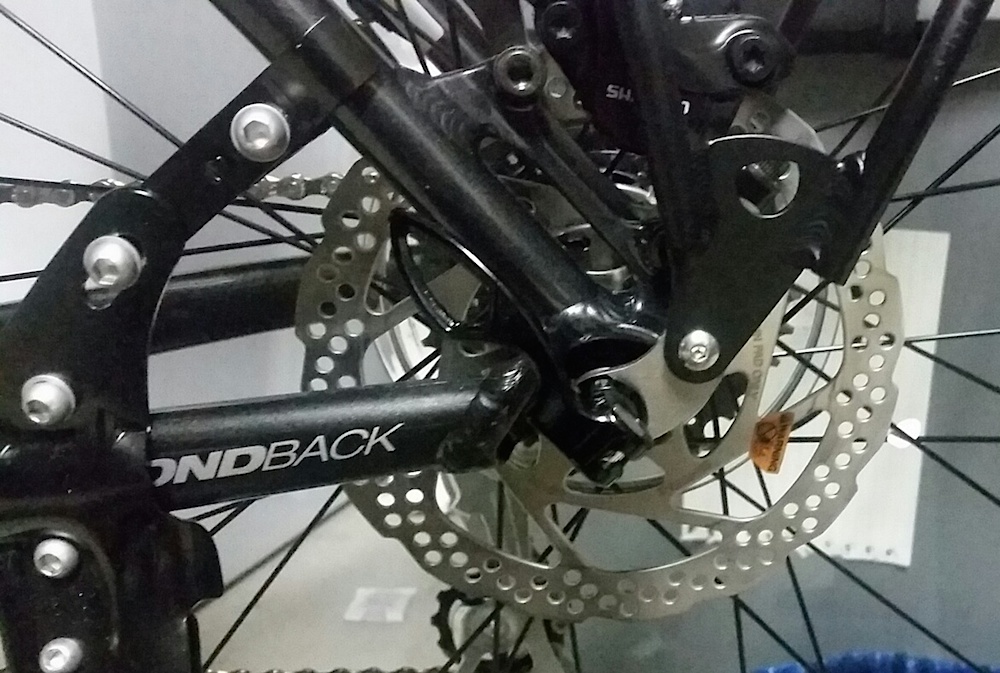
Tubus Quick Release Rack Mounting Kit
If your frame doesn’t have lower eyelets, you can use this kit to mount directly from your rear axle.
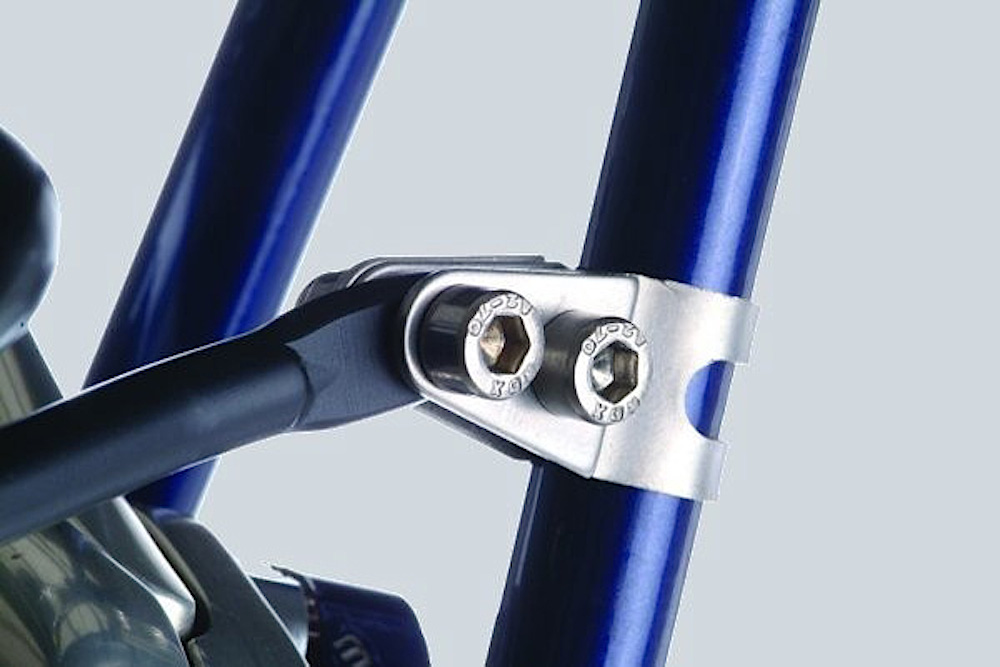
Tubus Stay Mounting Clamps
These neat clamps will allow you to mount the upper stays to your frame.
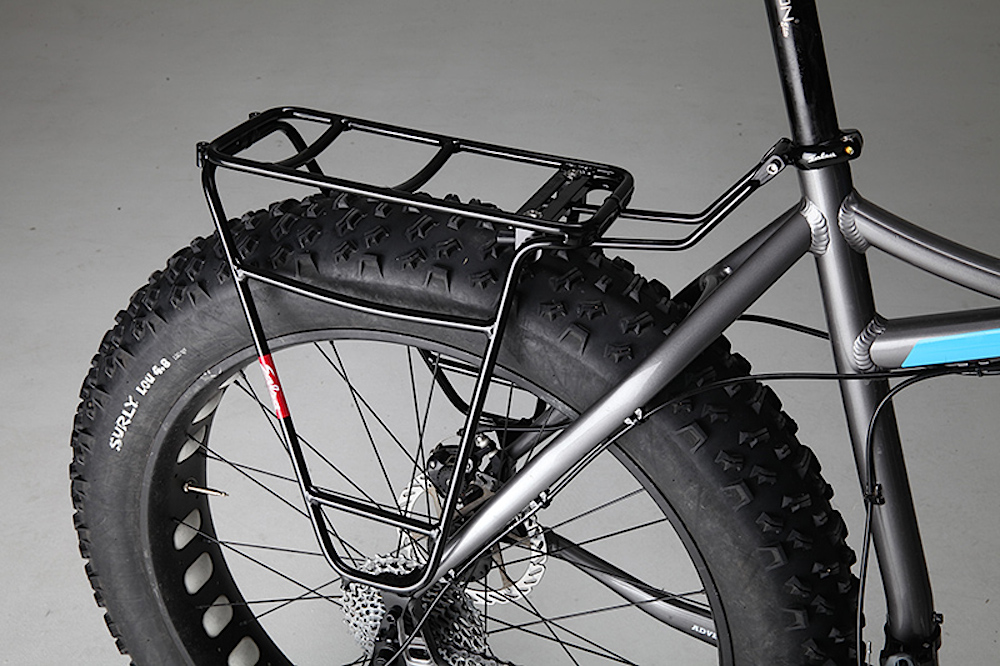
Seatpost Clamps With Rack Eyelets
Some manufacturers make seatpost clamps with rack eyelets built-in, avoiding all types of clamping.
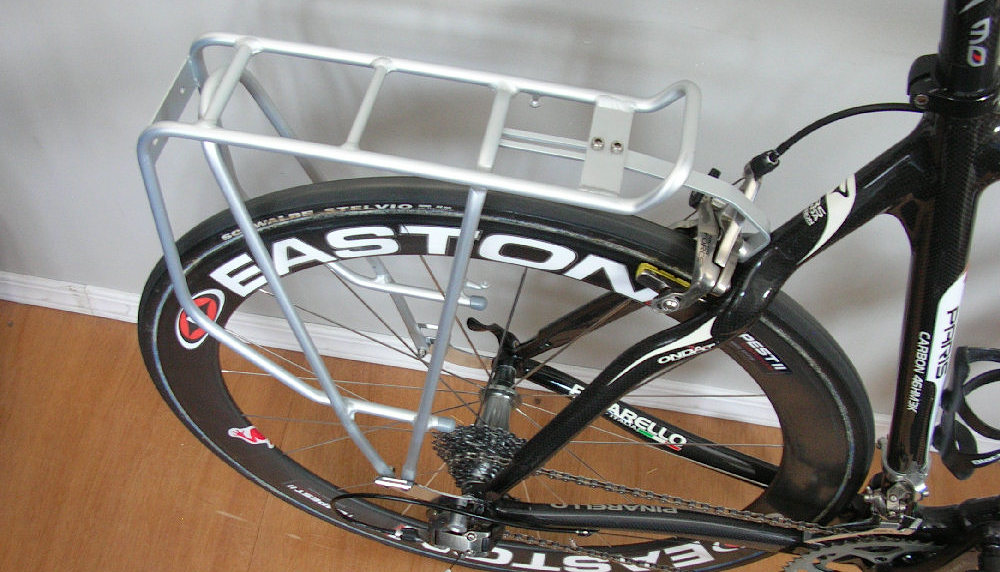
Axiom Streamliner Racks
The Axiom Streamliner rack is a budget option for rack mounting on frames without eyelets. They’ll mount from the brake bridge and rear wheel axle, fitting almost all road bikes. They have a “sweepback feet” design to provide extra heel clearance too.
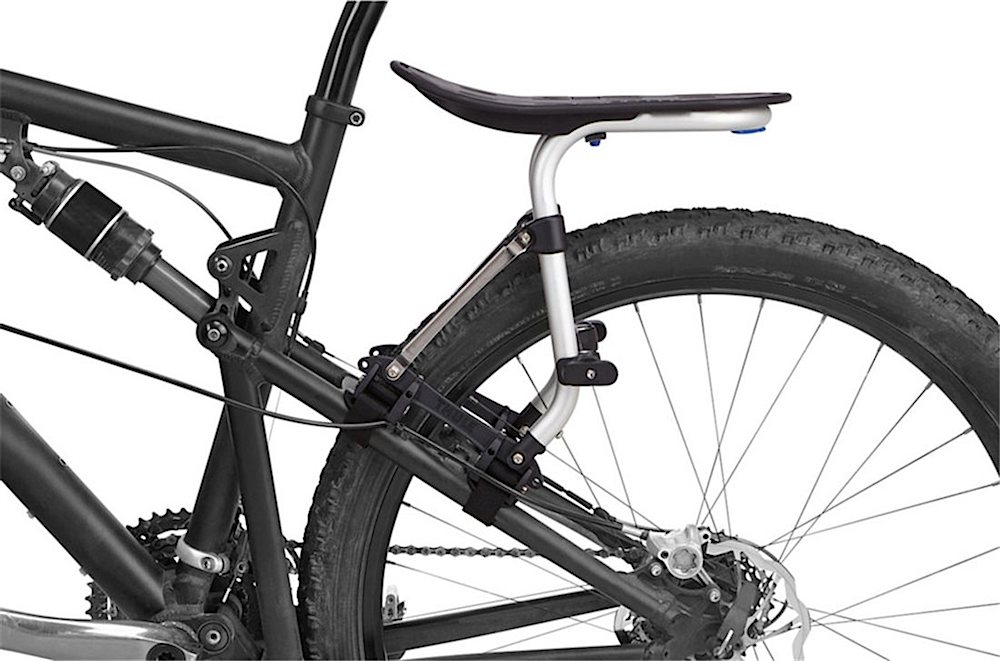
Thule Pack ‘N Pedal Tour Racks
If you are touring on a dual suspension bike or a carbon bike, check out the Thule Pack ‘n Pedal Tour Rack. These racks use quick release fittings that wrap around your fork and seat stays, and allow you to strap small loads on your bicycle.
Tubus Cargo vs. Tubus Logo
It can be confusing choosing between the two as they’re the same price with the same carrying capacity.
I recommend the Cargo if:
– You want to use an Ortlieb Rackpack bag over your rear panniers (larger surface area on the top)
– You want slightly more ground clearance for your bags (off-road touring)
– Your upper seat stay bolts are particularly wide set (the Cargo is a much better fit for frames with this characteristic)
I recommend the Logo if:
– You need additional heel clearance (for people with big feet or short chainstays)
– You want to strap goods onto the top of your rack (as panniers can be taken off while things are strapped to the top)
– You want a lower centre of gravity (the panniers sit low on the Logo, great for road touring)
I’ve used both the Tubus Cargo and Logo racks extensively, my reviews are HERE.
Recommended Racks
Bicycle Touring With Up To 40kg:
Tubus Logo, Tubus Cargo
For A Little Extra Heel Clearance / Lower Centre Of Gravity:
Tubus Logo, Tubus Cosmo
Light Touring and Audax:
Tubus Fly, Tubus Airy
No Rear Rack Mounts:
Dual Suspension or carbon frame: Thule Pack ‘n Pedal Tour
Standard frame: Tubus rack with QR mounting kit
Standard frame: Axiom Streamliner Disc
Lightweight Racks:
Tubus Cosmo for heavy-weight touring
Tubus Logo Titan for mid-weight touring
Tubus Airy for light-weight touring
Not Sure Whether To Run Front Or Rear Panniers? Here’s My Testing With Both Setups


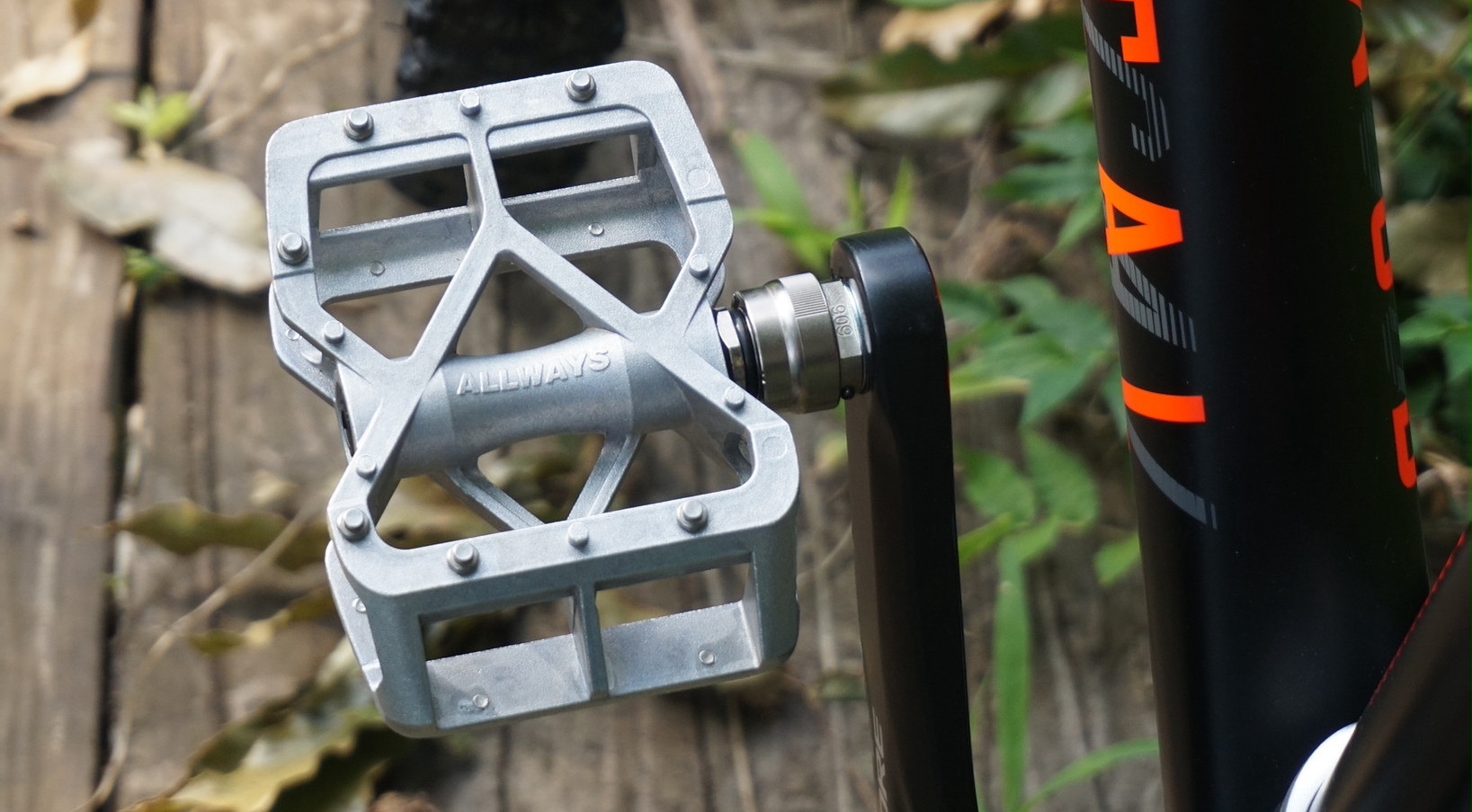
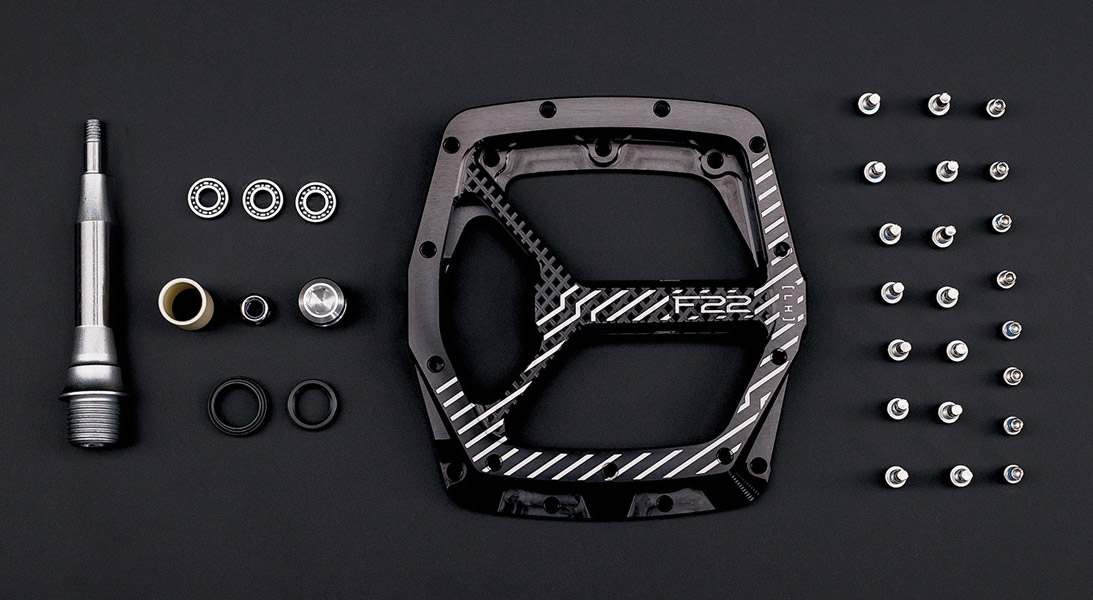
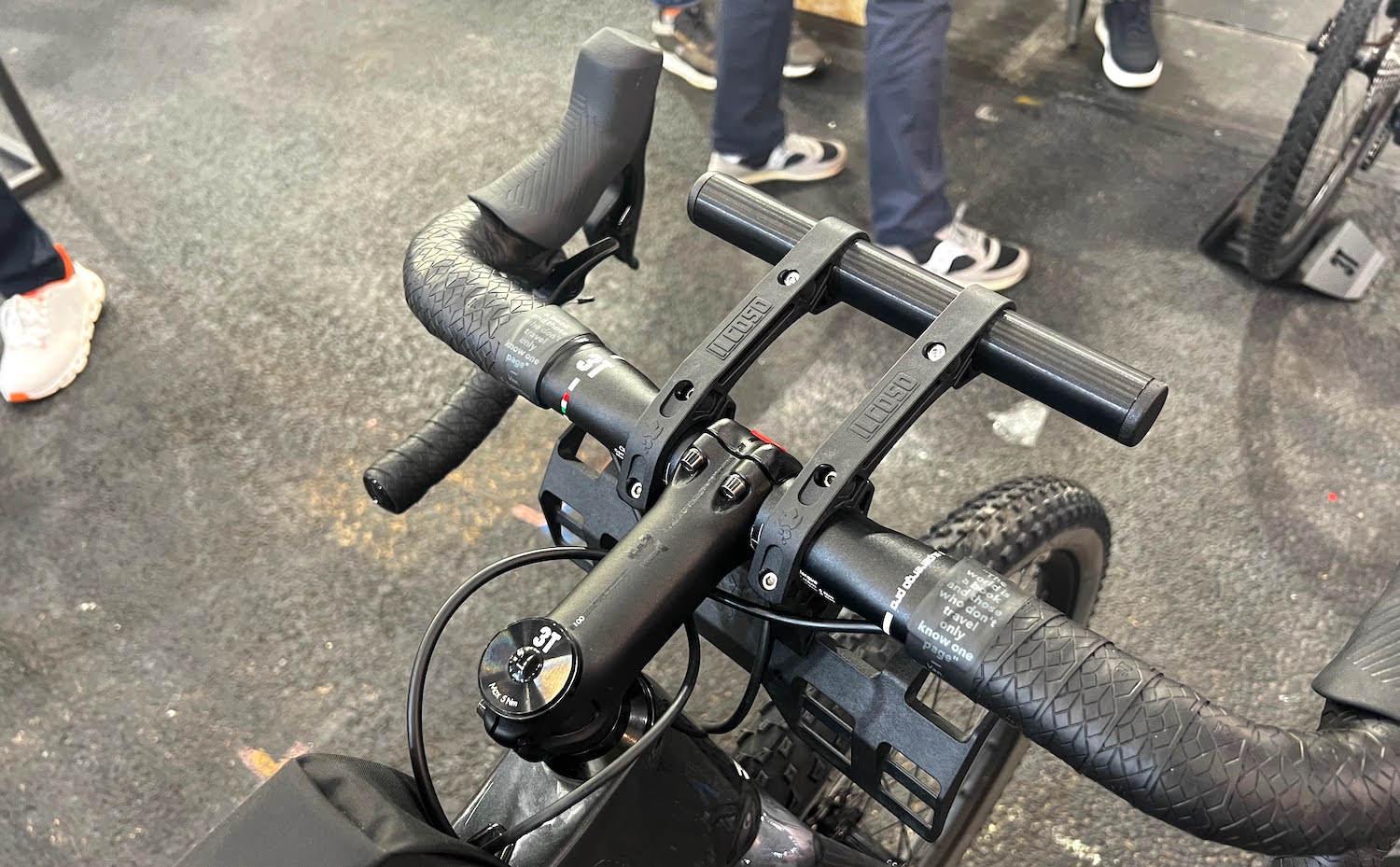

Bugger carrying touch up paint or worrying about rust… stainless steel racks FTW! I’ve got a Tubus Cosmo on my Vivente World Randonneur touring bike. Plus I have the matching Nova front rack that I will hopefully have installed tomorrow (might be a little tricky with the front disc brake to work around). I’m planning a min-tour next weekend, so it would be good to have the front rack fitted so I can test how the bike performs under a spread load.
The only real downside of the stainless steel Tubus racks is the cost.. however that is quickly forgotten once you start using them!
I bought a Trek Marlin which has the eyelets on the frame for a rack, but it also has disc brakes. I just bought the Tubus Cargo with the attachments for Disc Brakes but I’m still having trouble fitting it.. on top of that, there are two nuts missing from the Accessories kit I bought to help fit the rack to bikes with disc brakes…! I just emailed them with a photo though.
What about the rear racks that clamp from the seat tube (like the Topeak Beamrack)? Have anyone used them for touring?
Given their maximum capacity of 9kg, Topeak Beamracks often don’t quite carry enough given their weight. If you’re carrying sub-10kg, the best way to do that is with bikepacking bags: https://www.cyclingabout.com/complete-list-of-bikepacking-bag-manufacturers/
One thing worth noticing that differ the Tubus Cargo and the Logo is that the Cargo dont fit on fat wheels. I bought the cargo to my bike with 2,4″ tires and the arc inside the carrier was to narrow. I was really dissapointed with that since I like the look of the Cargo but I had to change to the Tubus Logo wich works fine with fat tires. Another thing is that even if You run 28″ wheels, often You can still choose the 26″ size carrier. It depends on how Your eyelets are placed. I run 26 carrier on my 28 bike bcz I want the carrier not to ride higher than necassary.
/Noa
One big difference between Tubus Cargo and Logo is that the Cargo dont fit on wide tires, but the Logo fits all tires.. I bought the Cargo for use with my 2,4″ tires but the arc inside the carrier was too narrow. Dissapointing since I like the looks of the cargo but I had to change to a Logo that fits fine. But I recommend the Logo evo since it both have better feet and allso a little knob that stops the panniers from slipping off backwards.
Another tip is to try if the 26″ size rack fits on your 28″ or 29er ,,, if it does, Your gravity will be a little lower and it allso looks cooler. I fitted a 26″ rack on my 29er without problem.
Another thing I wonder is – why is it better to strap a 16 lit saddlebag under your saddle than to fit a slim, light rear rack and strap a waterproof little packsack on top of that one? The whole setup will be just as slim but much sturdier and more flexible considering packsacks used. For me it looks just stupid strapping all the gear to the saddle and handlebar, I just dont get it.
/Noa
Hi Noa. Thanks for the rack tips. I’ve been meaning to get some data from Tubus for a while with regards to clearance. Have you seen the Arkel SeatPacker rack and RollPacker bags? They use a minimal seat rack for stability, and come in sizes up to 25L! Alee
Hi Alee, first, thanks for an amazing biking resurs that your page is. Well, for being a saddlebag, that Arkel looks impresive, but still, how about mounting a minimalistic Tubus Vega Evo and strapping a slim stuffsack on that one,, it would be pretty much the same, just with lower gravity and less swagging and less stress on the saddlestem…. /Noa
Again, thank you for your thorough approach to describing why you use particular components. It’s pretty eye-opening.
.
I’ve heard on other sites that Jannd Expedition is a direct competitor with Tubus, but this often has lacked any scientific backup, other than personal experiences with the Jannd rack lasting a while and taking a beating. I think the best notes I found were that it lacked the triangulation of the Tubus designs (as well as other competitors) and that sometimes it swayed slightly under duress.
.
Have you had any experience with Jannd’s racks?
I’ve just popped my rack onto my steel-framed Audax/touring bike and, even though I have plenty of heel clearance (helped no doubt by my Super C panniers) when the rack is mounted on the upper eyelets (directly above the axle), I’m wondering if the rearmost eyelets (currently used for the guards) might be better suited for the rack as they’re 17mm lower though they would sit the load 20mm further back. Would the benefit of a lower centre of gravity be offset by the more rear-ward postition – any thoughts?
I’ve played around a lot with rear racks, eyelets and bag positions, and have determined that a few millimetres here and there is not noticeable at all! Give it a go through, you might have a different experience.
Thanks Alee – I think I’ll bow to your experience and take the easy option of using the currently free ones!
Peace to you Alee,
Would you please tell me what the model and brand of the kick stand in the photo 5th from last is.
Thanks again.
May peace be with you.
That one is a pretty cheap, generic stand. Check out Hebie FOX 611 for steel frames or the Hebie FOX 671 for aluminium frames.
If you are serious about touring, and I don’t consider humping a tarp and an extra pair of underwear (just in case) from NY to Seattle as fast as you possibly can to be touring. If you plan on hanging up to and including 100 lbs. of gear off your bike then find a frame and rack made specifically for that purpose. Eyelets are better than aftermarket clamps for matching a random rack to your bike frame, but still allow flex, shift and fail when over stressed. Who would over stress a rack/frame in that manner? When a farmer stops you on a hot summer day and hands you a 25 pound watermelon, you take it, and do what is necessary to ride on. When you pull over for a picture and some ass hat skids to a stop in his grey Ferrari to throw out a Playboy Bunny want-to-be, you do what’s necessary to take full advantage of the situation and worry about the bike later. Look at bikes with integrated frame racks for maximum strength and durability. There will be a higher up front cost but less problems… “Down the Road”. https://uploads.disquscdn.com/images/8b8ae746728cf69ad7666153fea04ff8560405c9228abd84f134c6882e9e5cab.jpg
Yeah….. shit does happen. 🙂 https://uploads.disquscdn.com/images/da2232ff6cbc9a2b96323de6844e17c5c32c8c3f0eb32c6ebd7d2d7ea5d2744c.jpg
I have been asking myself this same question and still haven’t come up with a relevant answer. Why go with a large saddlebag when I can make/fit a very lightweight rear rack that I can strap a standard 20lt drybag on. I could even lower the load with a 10lt drybag and have two lighter 5lt bags down each side.
I’m very open to responses on the above idea. My touring experience is limited to a tandem with panniers and trying to learn all I can about bikepacking for doing the Tasmanian Trail on my hard-tail MTB. At the moment I’m looking at experimenting with a light rear rack and drybag rather than the expensive saddlebag option.
Alee, thank you for making your experience so available, I’ve read a lot of your site, very useful. Thanks again.
Racks and drybags rock! Don’t stress about getting a bikepacking saddlebag. And thanks for the kind words on the site. 🙂